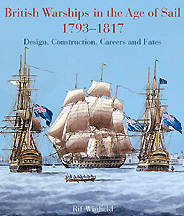The list of ship launches in 1662 includes a chronological list of some ships launched in 1662.
| Date | Country | Builder | Location | Ship | Class | Notes |
|---|---|---|---|---|---|---|
| Unknown | Christopher Pett | Woolwich | HMY Anne | Royal yacht | For Royal Navy. [1] |
The list of ship launches in 1662 includes a chronological list of some ships launched in 1662.
| Date | Country | Builder | Location | Ship | Class | Notes |
|---|---|---|---|---|---|---|
| Unknown | Christopher Pett | Woolwich | HMY Anne | Royal yacht | For Royal Navy. [1] |
Ship commissioning is the act or ceremony of placing a ship in active service and may be regarded as a particular application of the general concepts and practices of project commissioning. The term is most commonly applied to placing a warship in active duty with its country's military forces. The ceremonies involved are often rooted in centuries-old naval tradition.

A ship of the line was a type of naval warship constructed during the Age of Sail from the 17th century to the mid-19th century. The ship of the line was designed for the naval tactic known as the line of battle, which involved the two columns of opposing warships maneuvering to volley fire with the cannons along their broadsides. In conflicts where opposing ships were both able to fire from their broadsides, the opponent with more cannons firing – and therefore more firepower – typically had an advantage.

A warship or combatant ship is a ship that is built and primarily intended for naval warfare. Usually they belong to the armed forces of a nation. As well as being armed, warships are designed to withstand damage and are typically faster and more maneuverable than merchant ships. Unlike a merchant ship, which carries cargo, a warship typically carries only weapons, ammunition and supplies for its crew. Warships usually belong to a navy, though they have also been operated by individuals, cooperatives and corporations.

In the 18th century and most of the 19th, a sloop-of-war in the Royal Navy was a warship with a single gun deck that carried up to eighteen guns. The rating system covered all vessels with 20 guns and above; thus, the term sloop-of-war encompassed all the unrated combat vessels, including the very small gun-brigs and cutters. In technical terms, even the more specialised bomb vessels and fireships were classed as sloops-of-war, and in practice these were employed in the sloop role when not carrying out their specialised functions.

A screw sloop is a propeller-driven sloop-of-war. They were popularized in the mid-19th century, during the introduction of the steam engine and the transition of fleets to this new technology.

Garden Reach Shipbuilders & Engineers Ltd, abbreviated as GRSE, is one of India's leading shipyards, located in Kolkata. It builds and repairs commercial and naval vessels. GRSE also builds export ships.

A net laying ship, also known as a net layer, net tender, gate ship or boom defence vessel was a type of naval auxiliary ship.

Ten ships of the Royal Navy have borne the name HMS Serpent, after the synonym for snake, whilst another two were planned, and one appears to have been a spurious report:

Hellenic sloop-of-war Kartería was the first steam-powered warship to be used in combat operations in history. It was built in 1825 in an English shipyard for the revolutionary Hellenic Navy during the Greek War of Independence, on the order of Capt Frank Abney Hastings, a former Royal Navy officer who had volunteered his services to the Hellenic Navy.

HMY Royal Escape was a royal yacht owned by King Charles II. She was the former collier Surprise that had carried the king across the Channel to safety.
Eight ships of the Royal Navy have borne the name HMS Espiegle
HMS Herring was a Royal Navy Ballahoo-class schooner of four 12-pounder carronades and a crew of 20. The prime contractor for the vessel was Goodrich & Co., in Bermuda, and she was launched in 1804. She spent most of her career in North American waters though she did spend two years sailing between Britain and Spain before returning to North America where she foundered in 1813.

British Warships in the Age of Sail is a series of four books by maritime historian Rif Winfield comprising a historical reference work providing details of all recorded ships that served or were intended to serve in the (British) Royal Navy from 1603 to 1863. Similar volumes dealing with other navies during the Age of Sail have followed from the same publisher.
HMS Urgent was an iron screw troopship of the Royal Navy. She served her later years as a storeship and depot ship based in Jamaica.

Spider has been the name of a number of vessels of the British Royal Navy;

HMS Tyne was a Royal Navy store ship. Charles Mitchell of Low Walker, Newcastle upon Tyne built her as yard number 354, and launched her on 19 January 1878 as the merchant ship Mariotis for the Moss Steam Ship Company of Liverpool. The Admiralty bought her for the Royal Navy on 8 March 1878. She was completed in June 1878.

The Visakhapatnam-class destroyers, also classified as the P-15 Bravo class, or simply P-15B, is a class of guided-missile destroyers currently being built for the Indian Navy. The Visakhapatnam class is an upgraded derivative of its predecessor, the Kolkata class, with improved features of stealth, automation and ordnance.